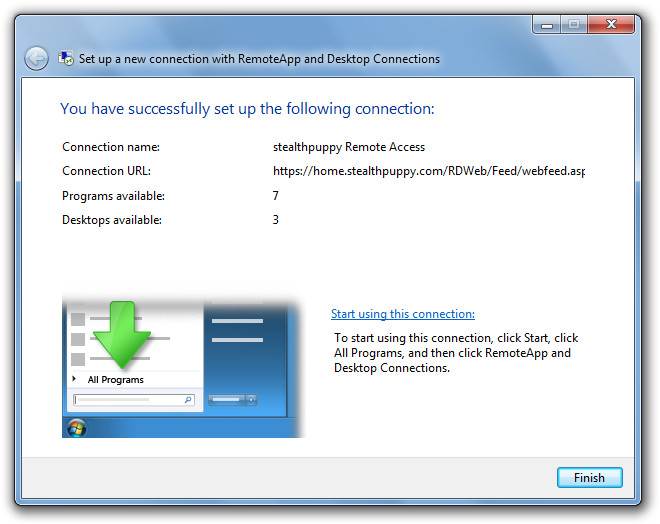Remoteapp Manager Windows 10
IMPORTANT: Starting with Windows 10 October 2018 Update, RSAT is included as a set of 'Features on Demand' in Windows 10 itself. See 'Install Instructions' below for details, and 'Additional Information' for recommendations and troubleshooting. RSAT lets IT admins manage Windows Server roles and features from a Windows 10 PC. We use Watchguard for our Firewall but we don't have anything blocked for RDP. RDP has worked in the past. Windows Firewall is enabled on the machines but not all of the rules are. The ones that are off are set to allowed anyway regarding RDP. We have the latest Windows 10 Updates and the Build 1703. A) Start connections in full screen - When enabled, anytime a connection is launched, the client will use the entire screen of the current monitor. B) Start each connection in a new window - When enabled, each connection is launched in a separate window, allowing you to place them on different monitors and switch between them using the taskbar. TSX RemoteApp allows publishing of single applications instead of a complete Windows desktop remotely. Applications published with TSX RemoteApp appear on the client desktop as if they were local with their own start menu entry, taskbar icon and resizable window.
Remoteapp Manager Windows 10 Installer
To make a program available remotely to users through RemoteApp Manager, you must add the program to the RemoteApp Programs list.
Remoteapp Manager Windows 10 Versions
Membership in the local Administrators/download-mini-tool-partition-wizard-full-crack.html. group, or equivalent, on the RD Session Host server that you plan to configure, is the minimum required to complete this procedure. Review details about using the appropriate accounts and group memberships at

| To add a program to the RemoteApp Programs list |

Remoteapp Manager Windows 10 64-bit
- The program name that will appear to users. To change the name, type a new name in the RemoteApp program name box.
- The path of the program executable file. To change the path, type the new path in the Location box, or click Browse to locate the .exe file.
Note You can use system environment variables in the path name. For example, you can substitute %windir% for the explicit path of the Windows folder (such as C:Windows). You cannot use per user environment variables.
- The alias for the RemoteApp program. The alias is a unique identifier for the program that defaults to the program's file name (without the extension). We recommend that you do not change this name.
- Whether the program is available through RD Web Access. By default, the RemoteApp program is available through RD Web Access setting is enabled. To change the setting, select or clear the check box.
- Whether command-line arguments are allowed, not allowed, or whether to always use the same command-line arguments.
- The program icon that will be used. To change the icon, click Change Icon.
- The domain users and domain groups that can see the icon for the program when the program is made available through RD Web Access. To specify the domain users and domain groups, click the User Assignment tab. For more information, see Assign Domain Users and Domain Groups to a RemoteApp Program.
The programs that you selected should appear in the RemoteApp Programs list.